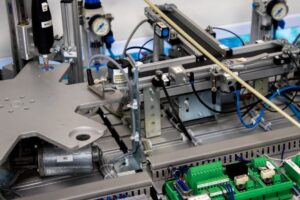The tech savvy teacher is truly a force to be reckoned with. Accessibility in education has suffered enough over the last few years, and students should not have to put their learning journeys on hold through no fault of their own.
Technology can be the vehicle through which the modern classroom thrives. For students with disabilities, the extra support provided by innovative tech can change their entire educational experience.
Supplying your students with the tools they need to flourish and learn for themselves is simply part of the educator’s day job.
Here are some points to consider if you feel like your own classroom needs a nudge in the right direction.
Assistive Learning Technology
Assistive tech helps you strive to support all of your learners. Not everyone learns at the same pace, or in the same way for that matter.
For students with disabilities who may find it hard to benefit from the information in the class, offering them ways to develop a routine that suits their particular needs should be a top priority.
For example, hearing assistive technology in the classroom environment can ensure that those who are deaf are offered the opportunity to benefit from your lessons, regardless of their personal circumstances.
Students no longer need to be placed at a disadvantage because of the learning environment itself, especially when there are reliable measures in place to prevent this from happening.
Creating an Inclusive Classroom
Inclusion in education is a concept that institutions everywhere should strive to achieve, it ensures that everyone is accepted and supported, which in turn can lead to a more diverse, safe and comfortable environment.
Communication problems can be a huge barrier to inclusion, especially for students with disabilities.
Nourishing communication efforts in the classroom can be aided with the help of assistive tech, as it essentially provides your learners with platform to be seen and heard when they might otherwise struggle to do so.
In many ways, using assistive tech like text-to-speech software, real time audio captioning or audio description tools requires a competent, knowledgeable, patient and understanding teacher to fully incorporate it.
This might mean doing a little research beforehand and working out what fits best for your classroom.
Distance Learning
Remote learning may be one of the defining aspects of the COVID era, but whether or not it sticks around for the long haul, there are valuable lessons to be learned from it.
For example, students who suffer from anxiety disorders may greatly benefit from a virtual classroom, so even if your particular institution has elected to return entirely to the in-person approach, maybe mooting the concept of a hybrid school setting is not a bad idea.
An All-Encompassing Experience
Learning does not start and end with the classroom. The opportunity to learn in their own time is immensely beneficial, a prospect that technology can help with.
Whether this is in the form of lesson transcriptions, video lectures e-worksheets or virtual classrooms, opportunity is out there, and it needs to be recognized by educators the world over.



